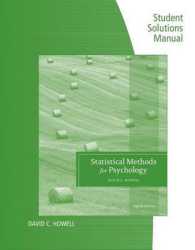Full Description
Vertebrate Endocrinology represents more than just a treatment of the endocrine system-it integrates hormones with other chemical bioregulatory agents not classically included with the endocrine system. It provides a complete overview of the endocrine system of vertebrates by first emphasizing the mammalian system as the basis of most terminology and understanding of endocrine mechanisms and then applies that to non-mammals. The serious reader will gain both an understanding of the intricate relationships among all of the body systems and their regulation by hormones and other bioregulators, but also a sense of their development through evolutionary time as well as the roles of hormones at different stages of an animal's life cycle.
Contents
1. An Overview of Chemical Bioregulation in Vertebrates2. Methods to Study Bioregulation3. Synthesis, Metabolism, and Actions of Bioregulators4. Organization of the Mammalian Hypothalamus-Pituitary Axes5. The Hypothalamuse Pituitary System in Non-Mammalian Vertebrates6. The Hypothalamus-Pituitary-Thyroid (HPT) Axis of Mammals7. The Hypothalamuse-Pituitary-Thyroid (HPT) Axis of Non-Mammalian Vertebrates8. The Mammalian Adrenal Glands: Cortical and Chromaffin Cells9. Comparative Aspects of Vertebrate Adrenals10. The Endocrinology of Mammalian Reproduction11. Comparative Aspects of Vertebrate Reproduction12. Chemical Regulation of Feeding, Digestion and Metabolism13. Comparative Aspects of Feeding, Digestion, and Metabolism14. Regulation of Calcium and Phosphate Homeostasis








